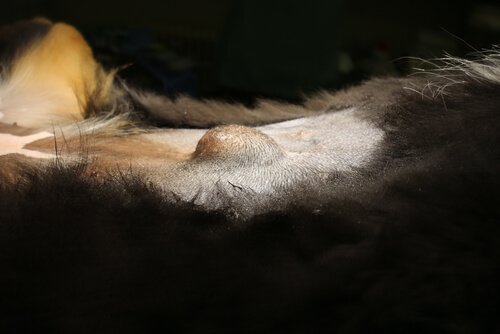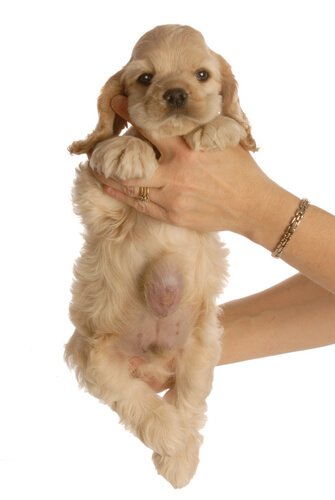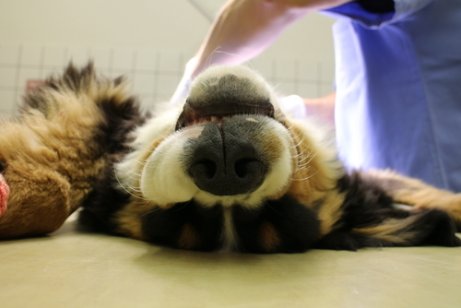Umbilical Hernias In Dogs

Many pet owners get scared when they see a lump on their dog’s stomach. However, this is the most obvious sign of umbilical hernias. Read this article to learn about the symptoms, causes, and treatment of umbilical hernias in dogs to known how to recognize it.
What is a hernia?
A hernia is formed when an organ – or part of it – expands out of the cavity that should contain it. An organ pushes through a weak point of the muscle or tissue.
The appearance of a hernia is smooth lumps, which are usually visible and soft to the touch. If you’re able to push the lump back in with your fingers, this is known as a reducible hernia. When the lump does not go back inside the cavity, it is an incarcerated hernia.
If oxygen is cut off and blood can’t reach the lump, this creates a strangulated hernia. In such cases, the prognosis is usually more complex and surgery may be needed.
Hernias can develop in any area of the body. Their name comes from according to their location. For example, umbilical hernias appear in the navel. In addition, they can be different sizes and change according to the animal’s body. When your dog has an hernia specialized attention and proper treatment will be required.

Causes of Hernias in Dogs
In General, hernias in dogs develop due to congenital malformations as of birth. In such cases, they are considered as congenital hernias. Hernias can also be caused by injuries, which are called acquired hernias.
How do umbilical hernias develop in dogs?
Umbilical hernias in dogs are almost always congenital. During pregnancy, puppies receive all their nutrients through the umbilical cord that unites their body with their mother. During labor, the female dog should break this cord with her teeth after the puppies are born.
In many cases, a small piece of the umbilical cord is left behind. Normally, it should dry up and fall off after about a week. Afterward, the hole left on the puppy’s stomach where the umbilical was located, should close after a week.
When the hole does not close completely, it may develop into an umbilical hernia. The internal organs, tissue, or fat from the puppy’s stomach can push forward on the weakened area and create a soft lump, which is the most visible sign of umbilical hernias.
In rare cases, the weakened area can also be caused by an injury from a trauma or an accident. When the dog experience a strong impact or a bite, it can “break” the abdominal wall and the hernia will secrete substances outside of the dog’s body.
What should you do if you see a lump on my dog’s stomach?
The lumps from umbilical hernias come in different sizes and change based on every dog. Therefore, if you notice a lump, then you should take your dog to the vet. Also, it’s best not to try to treat the hernia or use any home remedies before talking to a vet.

Treating Umbilical Hernias in Dogs
Depending on the dog’s age health, and the characteristics of the hernia, a professional can come up with an appropriate treatment plan. When it comes to a puppy with a small hernia, a veterinarian will usually choose to wait until the puppy is six months old. Their bodies may be able to correct the issue without any intervention.
If the dog is already older than six months, the treatment will depend on the hernia. Many times hernias are not dangerous and don’t pose any health risks. In these cases, in addition to regular follow-ups, you’re dog could get a cosmetic surgery.
When a hernia is very large, strangulated and poses a health risk, surgical intervention is usually unavoidable. When an organ is affected, the procedure will be more complex and risky.
